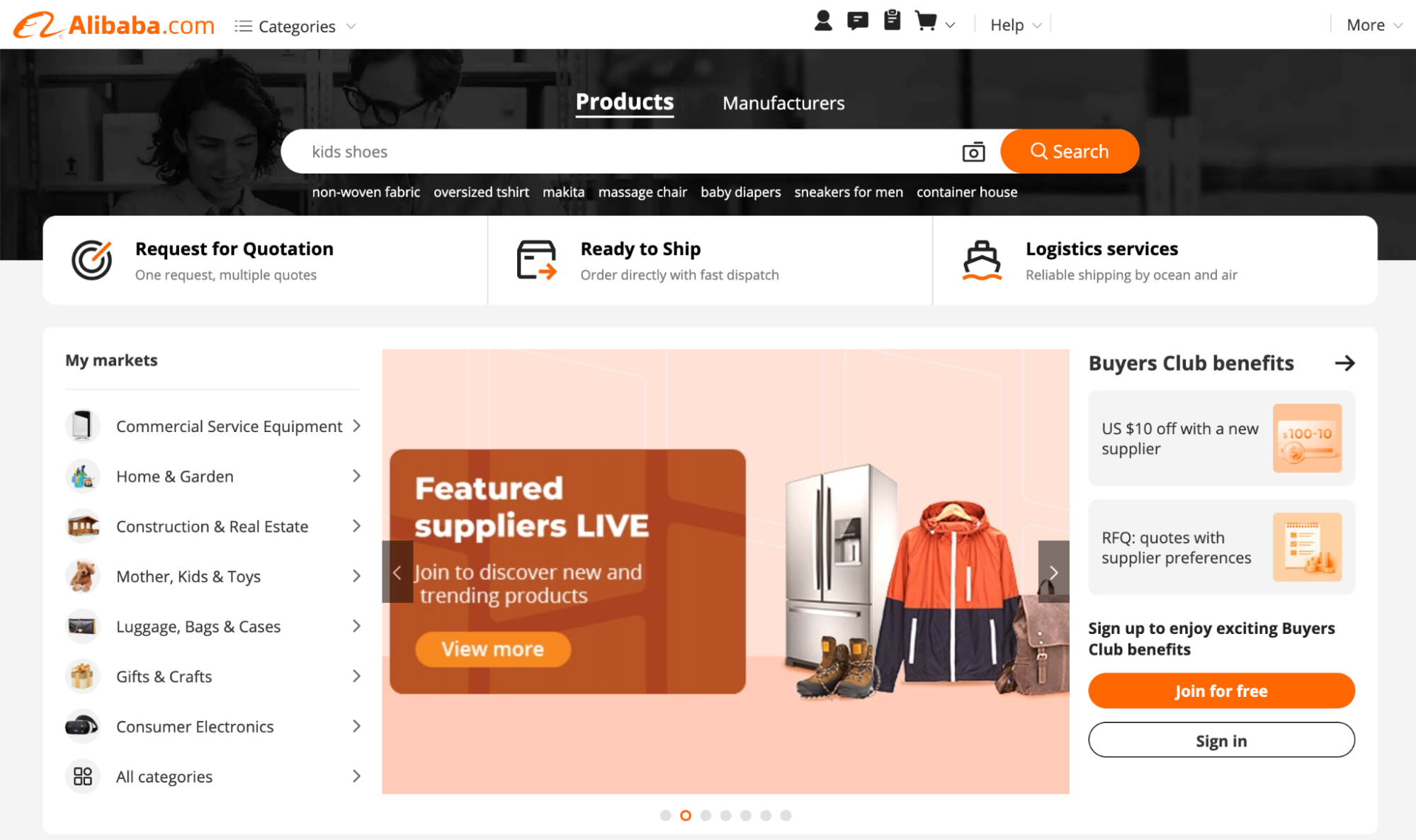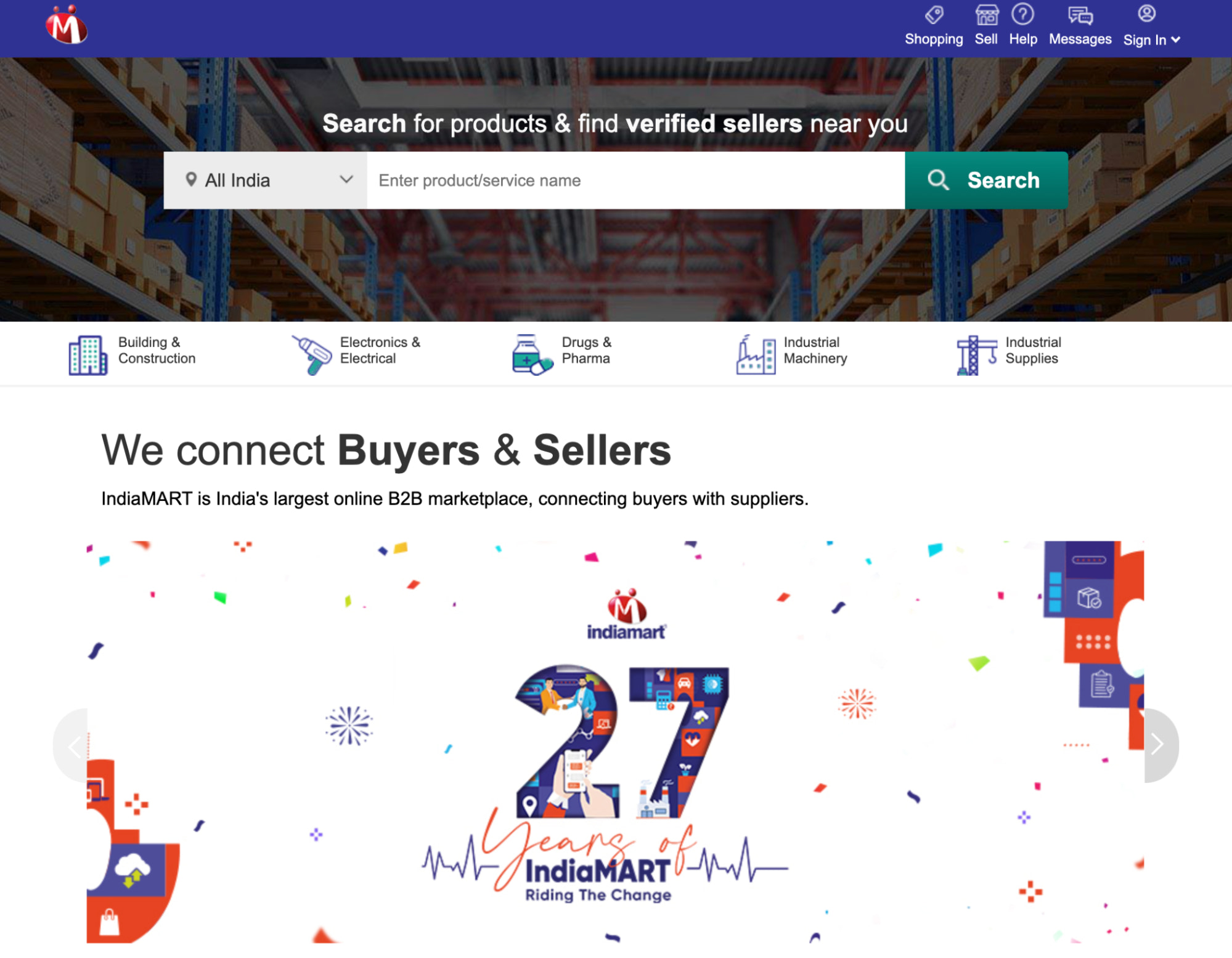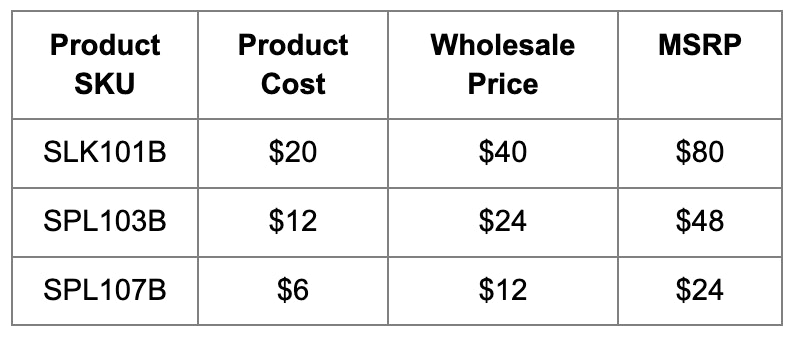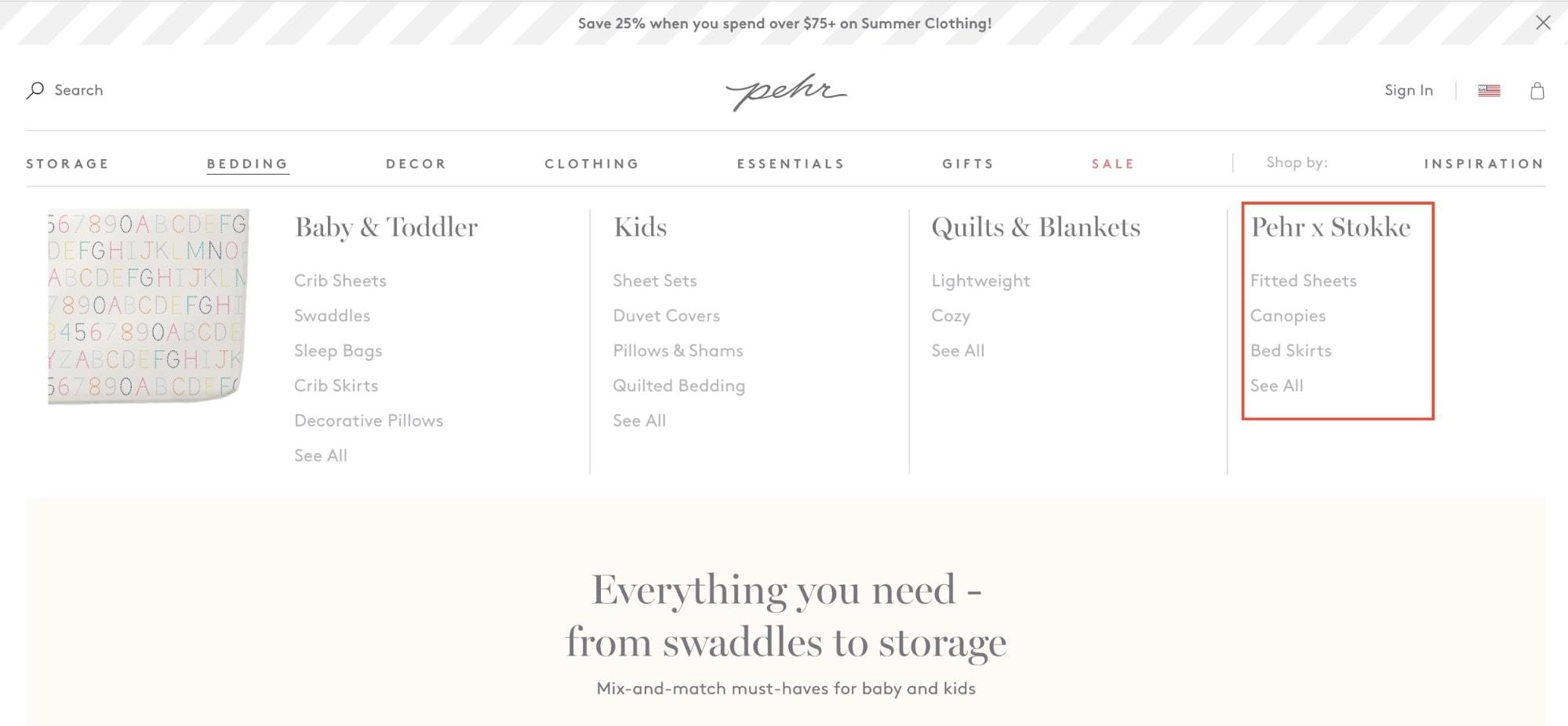Imagine you could focus more of your efforts on product design and innovation, beautifying your brand, or streamlining operations instead of finding customers and worrying about sales.
Marketing doesn’t come naturally for all entrepreneurs, which can make sustaining and growing a business a struggle. Luckily, you can pass on some—or even all—of that responsibility to other retail businesses, byusing business to business (B2B) as a new sales channel.
This guide walks you through how to sell wholesale and, how to tap into the$12.3 trillion wholesale industry, with tips for sourcing wholesale items to sell and setting up your store today.
Table of Contents
What is wholesale in business?
Wholesaling is the act of selling your products in bulk to another retailer, usually at a discount, who then sells the product to its customers at a higher price. It’s important to note that creating a B2B sector for your online business does still allow you to sell your product to the end consumer.
Understanding wholesale
As a wholesaler, you can sell to both consumers and other retailers. You don’t have to choose one or the other.
The first example of a wholesale business model that might come to mind are probably large brick-and-mortar department stores, like Walmart or Target. Wholesale is, after all, often thought of as an old-fashioned business model that’s being disrupted by newer direct-to-consumer ecommerce businesses.
:One of the myths aboutwholesale ecommerceis that you need loads of cash to get started. While you do need some startup money to break into the wholesale market, there are ways to scale your growth,says Simon Slade, founder ofSaleHoo.
"For example, reorganize your existing space to make room for your bulk products rather than renting a new storage space right off the bat. And don’t forget to negotiate with your suppliers—they tend to be more flexible when you’re making a large order."
With the rise of B2B marketplaces like Alibaba, Faire, and Handshake, the wholesale landscape has undergone a significant transformation for large and small businesses.
While ecommerce continues to empower direct-to-consumer brands by reducing barriers to entry, wholesale is adapting to changing buyer expectations, offering a streamlined and convenient shopping experience.
Today's wholesale market allows buyers to find a diverse range of products in one location, catering to their growing desire for efficiency and variety.
Popular wholesale business examples
Finding profitable items to resell not already on Amazon or eBay is challenging. Here is a round-up of the top marketplaces to find high-demand bestsellers from worldwide brands.
Handshake

Handshakeis a B2B marketplace powered by Shopify that connects wholesale suppliers and retailers. You can find handpicked wholesale items to sell from established and emerging suppliers, spanning categories like beauty and wellness, stationary, pets, and more.
Handshake integrates directly with the Shopify ecosystem, and curates a selection of unique products from a thriving community of trusted brands.
Faire

Faireis a wholesale marketplace operating in Europe and North America. Based in San Francisco, it ships to more than 15,000 cities in 15 European countries, the United States, and Canada, and offers over 60,000 independent brands. It’s free to join Faire, and you only pay a commission if Faire connects you with a new retailer through its marketplace.
Alibaba and AliExpress

The Ali family of sites is China’s most dominant online marketplace and app. Alibaba is for B2B buyers purchasing wholesale items to sell, while阿里巴巴全球速卖通是商业消费(B2C)产品。
阿里巴巴和全球速卖通是好寻找:
- Wide variety of products
- Private label or white label items
- Medium- to low-quality goods
Salehoo

Salehoois a New Zealand–based wholesale marketplace with more than 8,000 suppliers. In order to use the network, it’ll cost you a $67 per year membership fee. That will get you access to suppliers and providers in New Zealand, the United States, the United Kingdom, Canada, and Australia.
Tundra

Tundrais a zero-fee wholesale marketplace with over 10,000 brands as suppliers. It’s a wholesaler for people just starting out, and is free to use—it doesn’t even take a commission from your sales. Tundra also ships wholesale products to over 100 countries.
TradeGala

TradeGalais a London-based wholesale marketplace focused on fashion brands. It offers a three-tier membership, yet none of them requires a membership fee. If you’re a wholesaler looking to break into the fashion market, know that TradeGala only takes commissions off of sales made through its site.
IndiaMART

IndiaMARTis a free wholesale marketplace for both sellers and buyers. Based in India, it has a massive network of seven million suppliers in 40 categories at your disposal. It stocks everything from consumer goods to medical and industrial supplies, and even agricultural supplies.
eWorldTrade

eWorldTradeis a US wholesale marketplace with thousands of suppliers providing items in 39 categories. Know that eWorldTrade is on the pricey side: it has five major selling plans, and the cheapest begins at $399 per year.
How to start a wholesale business online
- Decide what wholesale items to sell
- Set a wholesale pricing strategy
- Create a B2B ecommerce site
- Accept payments for wholesale orders
- Sell your wholesale products
1. Decide what wholesale items to sell
There are many wholesale items to sell as a B2B business online. Whether you’re a veteran or a beginner, you can expand your product line with the ideas below.
Education
There is a large annual market for education supplies. In the United States alone, there were more than56.5 million K–12 studentsenrolled and more than four million teachers employed in2022.
Below are some education products to consider wholesaling:
- Arts and crafts supplies
- Educational software
- Writing utensils
- Notebooks/folders/binders
- Computers
- Calculators
- Backpacks
- Textbooks
- Lunchboxes
- Toys/games/puzzles
Home décor
According to Statista, home improvement sales globally amounted to around $830 billion in 2022. By 2027, this amount is expected to reach over $1 trillion. Home décor is a solid market for the wholesaling business.
Some home décor products to consider wholesaling are:
- Frames/wall art
- Candles and candle holders
- Pots/vases/plants
- Wallpaper/paint
- Flooring
- Rugs/runners
- Throw pillows and blankets
- Furniture
- Storage and organization
- Lamps/lighting
- Bedding
Clothing and accessories
不管是衣服工作、日常或规范ial occasions, everyone needs to wear something.
That’s why fashion is a large and ever-growing market.In 2022, the revenue of this market was approximately $1.53 trillion. According to the Consumer Market Outlook, this value will increase to almost $2 trillion by 2027.
Some popular product types to consider are:
- Baby
- Children
- Women
- Men
- Formal
- Casual
- Activewear
- Business
- Scarves
- Textiles
- Hats
- Jewelry
- Shoes
Food
Every human on this planet needs food, and will continue to need food for the rest of their lives. So this is an obvious category to wholesale, as the demand will always be there.
Below are some wholesale food products to consider selling:
- Beverages
- Dairy
- Ice cream
- Oils and shortening
- Beef
- Pork
- Poultry
- Seafood
- Frozen
- Fresh produce
- Chips/crackers
- Dessert
- Organic
- Low-carb
- Keto products
Purses and handbags
The global handbag market reached$38.5 billionin 2022. Below are some types of purses and handbags to consider selling wholesale:
- Totes
- Clutches
- Men’s bags
- Kids’ bags
- Wristlets
- Bucket
- Business
- Unisex
- Casual
- Travel
Kitchen materials
The kitchenware segment is expected to reach$17.3 billion worldwidein 2023. The market is expected to grow annually by 3.83% until 2027.
Below are some kitchen products to get your wholesaling business off the ground:
- Utensils
- Pots/pans
- Bowls/plates
- Platters
- Storage/organization
- Cabinets/shelving
- Knives
- Table linens
- Tables
- Chairs
- Appliances
- Glassware
Health and wellness
The health and wellness industry is set to make well over$7 trilliona year by 2025.Researchshows that the pandemic has driven people to care more about their health.
Here are some health and wellness products that do well in this product category:
- Massagers
- Vitamins and supplements
- Lotions
- Anti-aging creams
- Skin care regimens
- Aromatherapy
- Fitness apparel
- Oils
- Candles/incense
- Yoga accessories
- Treadmills
- Organic beauty products
Pet supplies
US homes spend an average of$703on each pet annually. It’s clear that getting into the pet supplies wholesale business is profitable. Here are some wholesale pet items to sell:
- Toys
- Treats
- Food
- Health care
- Cleaning supplies
- Grooming
- Bowls/feeders
- Clothing and accessories
- Leashes, collars, and harnesses
- Crates, cages, and aquariums
- Beds/bedding
Party supplies
The party planning market reached$4 billionin 2022. Wholesaling party supplies not only gives you a variety of products to sell, it gives you volume as well. Plus, the market doesn’t seem to be going anywhere.
Here are some products to consider in this category:
- Linens
- Balloons
- 聚会礼品
- Disposable tableware
- Banquet equipment
- Backdrops
- Décor
- Centerpieces
- Lighting/candles
- Flowers
2. Set a wholesale pricing strategy
Pricing strategiesare one—if not the most—crucial component to creating a successful wholesale business. When selling directly to customers on your website or in your retail store, you get to keep whateverprofit marginyou set for yourself, which often can be north of 50%.
Here is an example of a healthy pricing strategy, where a wholesale business would retain a 50% profit margin on wholesale orders and a 75% profit margin on direct-to-consumer sales:

A profitable pricing strategy for wholesale requires a business to be able to maintain a profit margin while offering retailers 50% off the manufacturer’s suggested retail price (MSRP).
Luckily, there are ways to price your product wholesale to mitigate the risk of not being profitable. One way is to offer a discount based on purchase order quantities.
This way, retailers are encouraged to place larger orders for a better margin upon resale of your product. Many wholesale businesses even set minimum order quantities (MOQs) that retailers must buy in order to carry their product.
When you decide to wholesale your product and have it carried by multiple stores, you can sometimes run into issues with competing retailers undercutting each other when it comes to price. This is why creating an MSRP is an important element of your wholesale pricing strategy.
An MSRP is often part of a contract that a business will give a retailer that wants to sell its products. It guarantees the retailer will stick to the suggested retail price so the product pricing will be the same wherever it is found, in stores or online. Usually, the MSRP is found alongside individual products on a wholesale storefront, or on a sales sheet or product brochure sent to prospective retailers who wish to carry your product.
One thing to consider when setting up an MSRP agreement is whether you want to allow discounting around holidays likeBlack Friday and Cyber Monday, or specify certain times you might want to discount the product to customers on your own website.
As the wholesale supplier, you get to set the rules that your retailers have to comply with, but maintaining a fair pricing balance is essential to making your retailers successful. If your retailers are able to make a profit selling your product, they’ll continue to come back and place larger orders.
3. Create a B2B ecommerce site
When it comes to selling wholesale, you can sell B2B and direct to consumer (DTC) in a single store, or choose to have a separate, dedicated B2B store but still through one single admin.
If you are considering only selling your product wholesale through other retailers, you can set them up with a customer account in your store.
B2B customers can use a password-less process to log in. When a B2B customer logs into your store, they’ll receive a six-digit verification code to their email address.
After entering the code, they can place B2B orders, access price lists reflected in the online store, and access company and location information in their account.
You can manage these in your Shopify admin under Settings > Customer accounts.

There are a few ways B2B customers can access new customer accounts:
- Set up new customer accounts in settings
- Manually add the URL to your online store navigation
- Share the login URL directly with your B2B customers
- Send a B2B access email
If your company does a high volume of sales, consider upgrading toShopify Plusand take advantage of itsB2B Ecommercefeature. You can easilycreate a personalized buying experience for B2Bthat convinces customers to continue buying.
4. Accept payments for wholesale orders
Payment terms let you set how long that company has to pay. You can set payment terms for any company that you sell to with B2B.
After you set payment terms for a B2B buyer, any representative can enter payment information for the order.
There are three available payment terms to offer:
- None:Customers pay for orders immediately at checkout.
- Net (period): Customers pay for orders any time between when they place an order and the due date. Available terms are seven, 15, 30, 60, and 90 days.
- Due upon order fulfillment:Customers pay before all items are fulfilled in the order.
Collecting payment from wholesale customers
Credit card vaulting is a functionality available to merchants that use Shopify Payments. It allows secure storage of credit card information for convenient future transactions.
B2B customers can save their card details during checkout or through their customer account. Vaulted cards are linked to a specific company and can be used by all customers associated with that company.
Customers can manage vaulted cards in their account, and you can manually charge cards, change cards for pending payments, or delete vaulted cards for a customer.
5. Sell your wholesale products
Now that you have your wholesale pricing strategy figured out and a wholesale channel set up in your store, it’s time to search for prospective wholesale customers. But where do you find these retailers, and how can you increase sales?
Use your direct-to-consumer website
Oftentimes, a retail customer will actually find you first. If you’ve had success with direct-to-consumer advertising, you’ve possibly already received messages from distributors who want to carry your product online or in their physical stores.
广告对消费者在线,你are also reaching other business owners who might be interested in carrying your wholesale items to sell on their sites. This is why it’s important to keep a link in your website footer for wholesale inquiries: so resellers browsing your website can easily contact you about potential opportunities.

Rockwell Razorskeeps an easily accessible link to awholesale inquiry formon its website footer.
Join a wholesale marketplace
Retailers today can find and order products from wholesale marketplaces. Aside from selling wholesale to retailers in your own ecommerce store, you can also join a popular marketplace to build brand awareness and reach new buyers.
Do research on prospective marketplaces to make sure they’re the right fit. You want the marketplace to easily integrate with your store.
Attend trade shows
Trade shows are traditionally where a wholesale business goes to make connections and find retail partners. There are specialty trade shows for nearly every category of retail, from baby apparel and athletic leisure clothing to furniture and home décor. There are eventrade show directoriesthat list top trade shows according to categories.
Trade shows, however, can be expensive. They often require travel and a substantial booth fee, if you want to exhibit there. It’s worth attending first and walking the floor to make sure it will be worthwhile to exhibit.
Reach out to complementary brands
One added benefit of a wholesale channel is that, unlike direct to consumer, you don’t always need a large volume of customers in order to grow. If you have a handful of high-quality retailers who are successful at selling your product, they can come back and continue to place larger orders again and again.
To find these select partners, reach out personally over social media, phone, or email to a company you believe would be a great fit. A business that sells complementary products is a good place to start.
One example of a wholesale collaboration between two complementary brands can be found withPehrandStokke:

Pehr and Stokke formed a partnership and now sell each other’s complementary products on their respective websites: Stokke creates and sells a line of cribs and baby furniture for design-minded families. Pehr created a line of 100% organic sheets that are now sold on the Stokke website, while Pehr carries Stokke’s cribs on its site.
Some of the best wholesale partnerships are made through personal contact and establishing trust and rapport in real life. So if you see a brand you admire, reach out if you believe working together would benefit both sides.
Use incentives to motivate buyers
Incentives work for wholesale buyers just like everyday consumers do. Some online retailers selling wholesale will offer discounts to buyers based on the amount of products they buy. A common offer is a percentage off for a customer’s first order. Other incentives could include offering:
- Low order minimum requirements
- Free shipping based on order amount and delivery location
- Various payment options
- Bundle deals
- Free samples and testers
You could also offer dropshipping services as a wholesaler. When a company sells a product on its website, you deliver it to the end customer versus a wholesale distributor, which could be cheaper for the company.
Is a wholesale business profitable?
This newer version of wholesaling, which often takes place in online marketplaces or through smaller boutiques, has advantages that attract direct-to-consumer brands, too. Here are three reasons why opening up a wholesale channel might benefit your business.
1. Increase sales without increasing marketing spend
As a direct-to-consumer brand, a large amount of your budget needs to be allocated to marketing in order to grow. For every new customer acquired, there is often a cost, after all.
"The most common myth is that B2B customers won’t shop online, so there’s limited growth potential," saysShane Barker, digital marketing consultant. "In truth,B2B ecommerceis experiencing massive growth and drives much higher revenue than B2C ecommerce.
By selling your products wholesale, another business shoulders the cost ofcustomer acquisitionand inventory management, while you reinvest your time and money into other areas of your business.
2. Leverage other brands’ audiences to sell your product
Just as acquiring new customers costs money, building a loyal audience of fans and customers is not an easy feat. By creating a wholesale partnership with an established brand that has already made a name for itself within your niche, you can leverage the company’s goodwill to get your product into customers’ hands.
3. Enter new markets with less risk
Expanding your business to a new country or territory comes with a series of associated costs, like warehousing and logistics. You might also have to start from scratch, marketing to a population that hasn’t heard of you.
Finding another retailer with an existing presence and supply chain in a new market can reduce the risk of international expansion by cutting your setup costs.
Ultimately, a wholesale distribution business model benefits both the retailer and the wholesaler by creating efficiencies. The retailer gets a new—often complementary—product to sell without investing in research and development, and the wholesaler saves money on marketing by gaining direct access to an existing customer base.
OB欧宝娱乐APP开始selling B2B with Shopify today
The rise of ecommerce has allowed direct-to-consumer brands to launch faster and grow digitally. As a result, many had written off selling wholesale items as a fading retail trend. However, a new wave of wholesale startups are actually thriving in the era of ecommerce by rethinking the way wholesale works.
Both direct-to-consumer brands looking for new sales channels and entrepreneurs who want to save on marketing spend are opening wholesale businesses. With the right pricing strategy and a little know-how, you can start opening your business up to new revenue-generating partnerships and see your product flourish among complementary brands.

